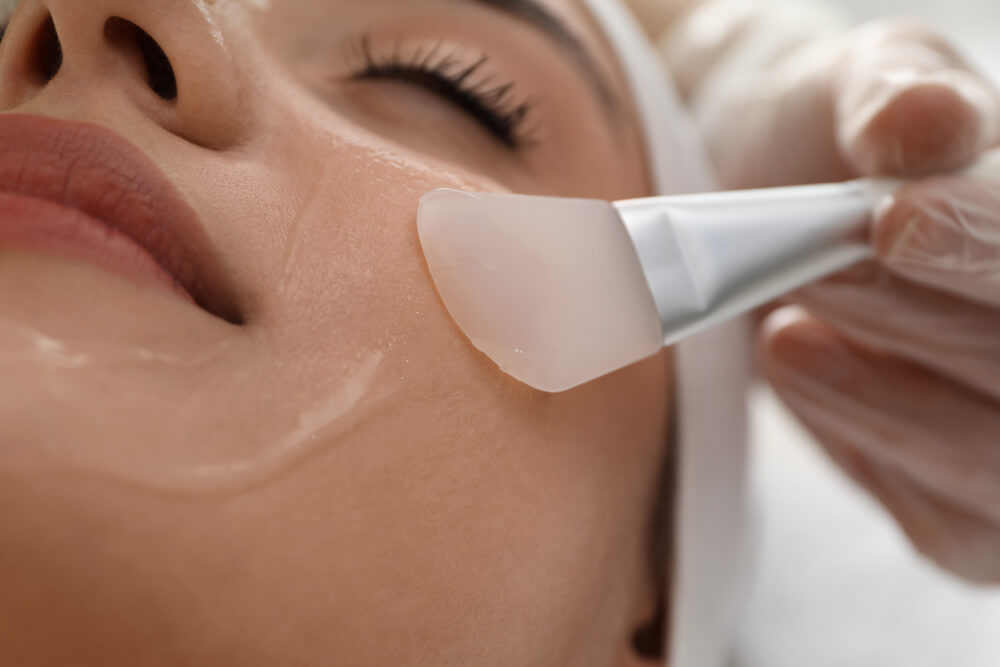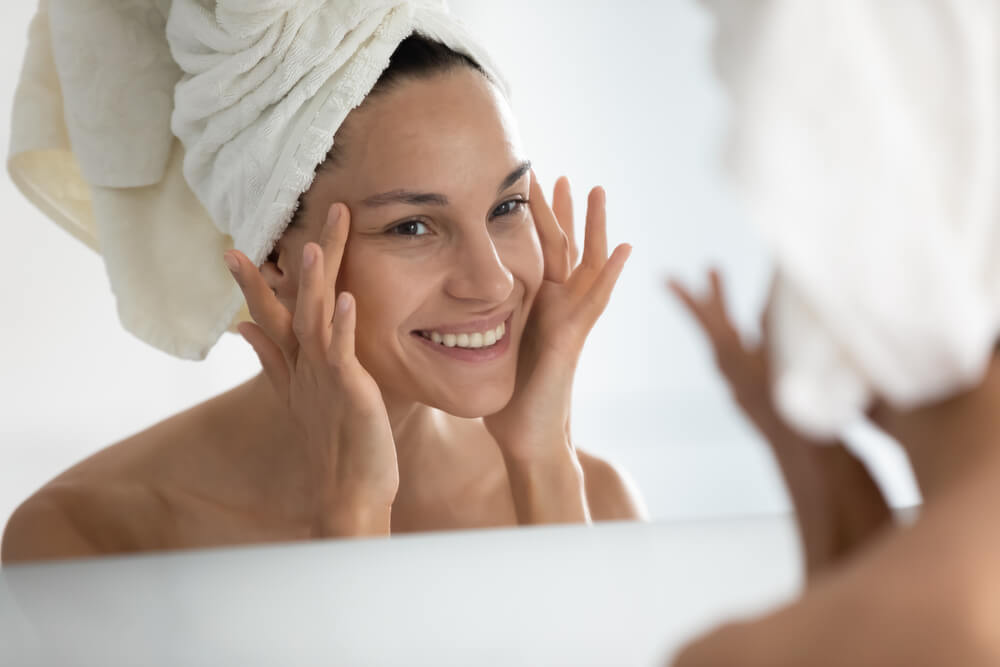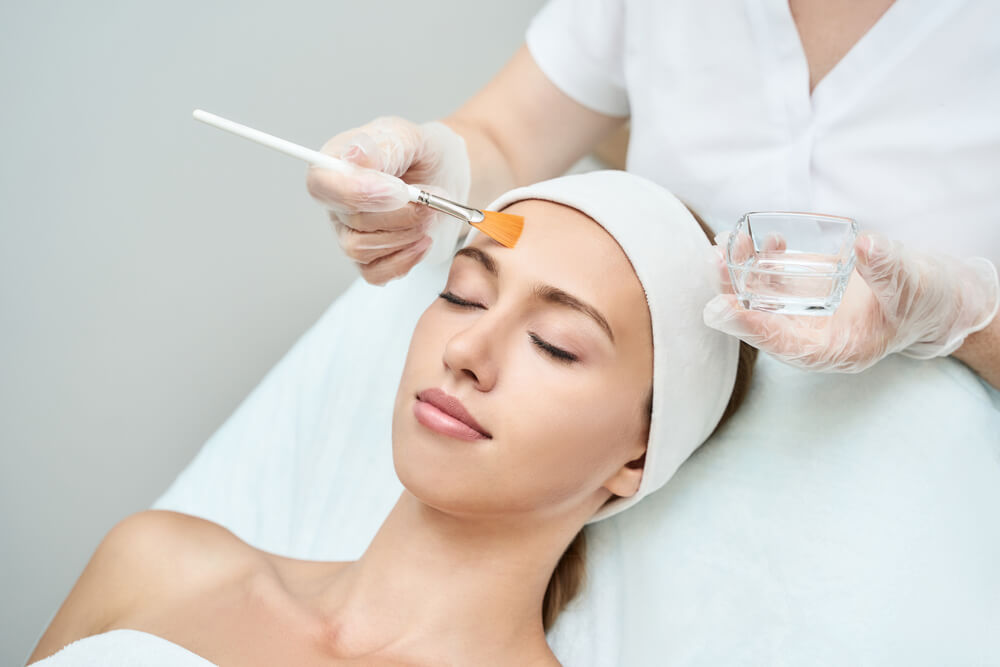Everyone wants to look youthful for as long as possible. We use different facial care products, but it often happens that this is not enough. Face creams, face masks, and scrubs alone are often not enough to give us the results we desire. Their effect is only on the first layer of the skin, and we need deeper care for lasting results.
Chemical peels improve the condition of the skin, rejuvenating and regenerating it. Dead skin cells are removed, and the skin becomes healthier and more youthful. Additionally, chemical peels allow your home care products to penetrate deeper into the skin for better results.
If you are looking for the right place for medical aesthetics and want to find out if a chemical peel is a proper treatment for you, contact us at Green Dermatology & Cosmetic Center in Deerfield Beach, FL.
What is a Chemical Peel?
A Chemical peel is a cosmetic treatment that solves many skin problems and rejuvenates the skin. We use chemical peels to treat areas such as the face, neck, and hands. This treatment leads to the exfoliation and peeling of the outer layer of the skin. This removes dead cells, improves collagen synthesis, and creates new skin that is smoother, healthier, and simply looks fresher.
Chemical peels are performed with different acids, and there are several types of chemical peel treatments.
A chemical peel treats skin problems such as:
- acne and acne scars
- stretch marks
- scars
- hyperpigmentation
- melasma
- uneven skin tone and skin texture
- sun damage
- wrinkles and fine lines.
If you recognize your skin problem among those listed here, feel free to schedule your consultation and appointment for a chemical peel treatment at Green Dermatology & Cosmetic Center in Deerfield Beach, FL.

Types of Chemical Peel Treatments
There are several types of chemical peels, depending on the skin problem you are dealing with, the agents it contains, and the depth of penetration. The type of chemical peel you use also depends on the sensitivity of your skin, the reasons, and the goals you want to achieve.
Types of chemical peels are:
- Superficial peels – We use mild acids such as alpha hydroxy acid (AHA) and retinoic, salicylic acid, etc. They slightly exfoliate the skin. This type of peel penetrates the outer layers of the skin. We most often use this type of chemical peel for hyperpigmentation, wrinkles, acne, rejuvenation, and hydration.
- Medium peels – With this type of chemical peel, we use trichloroacetic acid, salicylic acid, glycolic acid or retinoic acid, or a combination of them to treat the outer and middle layers of the skin. It is effective not only for removing stretch marks and large pores but also for anti-aging and skin hyperpigmentation.
- Deep peels – We use phenol or trichloroacetic acid for this chemical peel. It penetrates deeper layers of the skin and solves the problem of photo pigmentation, wrinkles, and scars.
The Chemical Peel Procedure
At the appointment, the doctor will determine the skin issue that needs to be addressed through a chemical peel, along with the type of peel treatment. The procedure is performed in the office.
Before the chemical peel treatment, the doctor will carefully clean your face and explain the procedure to you and aftercare instructions.
For chemical peels. We use gauze, an applicator with a cotton ball, or a brush with which we apply the acid.
In superficial peels, the skin temporarily turns white when acid is applied. You may also feel slight stinging or burning that will pass shortly. After the treatment, the doctor removes the chemicals from the face and applies a product that neutralizes them. Recovery may take up to a week.
With medium peels, you may feel a mild burning sensation on your face, but your doctor will apply a cold compress. You may get a hand-held fan to cool your skin until the effects pass. Before the new skin appears, the old skin sloughs off.
How Much Does a Chemical Peel Cost?
Generally, chemical peel costs will vary depending on the type of peel you choose. But generally, they are very affordable.
Potential Risks and Side-effects
Before you decide on a chemical peel, you should tell your doctor if you:
- use antiviral medication
- have had fever blisters, herpetic lesions around your lips
- use cosmetics with acids
- use preparations to prevent skin darkening
- bleach your hair
- have had waxing
- use facial scrubs.
After a chemical peel treatment, common temporary side effects on the skin may occur, such as:
- redness
- dryness
- slight stinging or burning
- swelling
What Are The Benefits of a Chemical Peel?

Chemical peels are a very popular skin treatment.
The advantages of this cosmetic procedure are numerous. Some of the benefits of chemical peels are:
- Wrinkles and fine lines are less visible;
- Acne and other scars are less visible;
- Stretch marks are reduced;
- Reduction in acne and blackheads;
- After the treatment, dry skin is hydrated, and with oily skin, oiliness is reduced;
- The skin is regenerated and looks refreshed.
The Bottom Line
Chemical peels are a cosmetic procedure that many people choose for various reasons. Some go for chemical peel treatment to rejuvenate, some to solve long-term skin problems, and some to improve the condition of the skin.
If this topic was useful to you and helped you decide on chemical peeling, call us and schedule your consultation with a doctor at our Green Dermatology & Cosmetic Center in Deerfield Beach, FL. Call 954-481-0650


